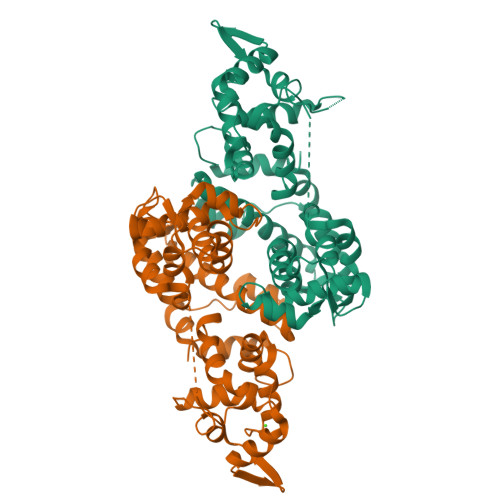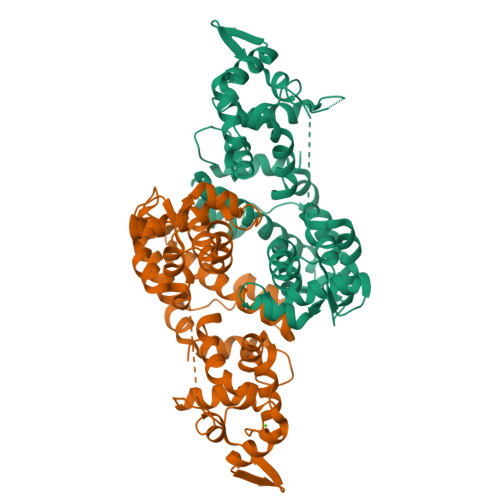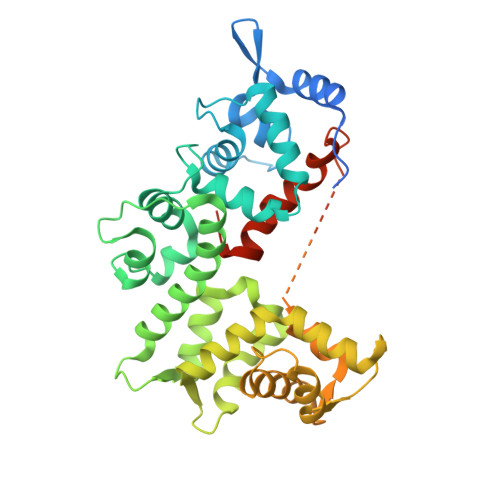Calcium-induced conformational changes of the regulatory domain of human mitochondrial aspartate/glutamate carriers.
Thangaratnarajah, C., Ruprecht, J.J., Kunji, E.R.(2014) Nat Commun 5: 5491-5491
- PubMed: 25410934
- DOI: https://doi.org/10.1038/ncomms6491
- Primary Citation of Related Structures:
4P5W, 4P5X, 4P60 - PubMed Abstract:
The transport activity of human mitochondrial aspartate/glutamate carriers is central to the malate-aspartate shuttle, urea cycle, gluconeogenesis and myelin synthesis. They have a unique three-domain structure, comprising a calcium-regulated N-terminal domain with eight EF-hands, a mitochondrial carrier domain, and a C-terminal domain. Here we present the calcium-bound and calcium-free structures of the N- and C-terminal domains, elucidating the mechanism of calcium regulation. Unexpectedly, EF-hands 4-8 are involved in dimerization of the carrier and form a static unit, whereas EF-hands 1-3 form a calcium-responsive mobile unit. On calcium binding, an amphipathic helix of the C-terminal domain binds to the N-terminal domain, opening a vestibule. In the absence of calcium, the mobile unit closes the vestibule. Opening and closing of the vestibule might regulate access of substrates to the carrier domain, which is involved in their transport. These structures provide a framework for understanding cases of the mitochondrial disease citrin deficiency.
Organizational Affiliation:
The Medical Research Council, Mitochondrial Biology Unit, Wellcome Trust/MRC Building, Hills Road, Cambridge CB2 0XY, UK.



















